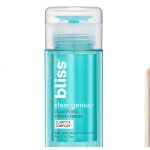In skin care, retinol just might be the most popular ingredient of all — and there’s way more to this skin care superhero than meets the eye.
First of all, the retinol serum sitting on your shelf? It probably isn’t a retinol at all.
“Retinol” is used as a catchall term, but it isn’t accurate. Retinol actually is just one type of retinoid, a derivative of vitamin A. (Since retinoid is more accurate, that’s how I will refer to the group of vitamin A derivatives. When I use the term “retinol,” I am referring to the specific type of retinoid.)
What are retinoids?
Topical retinoids are amazing for skin since they speed up cell turnover, which means they accelerate your skin’s natural process of shedding old cells and bringing new ones to the top.
You’re in the market for a good retinoid if you want to tackle obvious wrinkles, loss of tone or elasticity (sagging and bagging), and uneven texture. It’s also useful in shrinking pores and clearing up acne.
An antioxidant, it also works to combat the free radicals all around us that are responsible for the visible signs of aging. It helps reveal a more youthful appearance and revitalize dull-looking skin.
How do types of retinoids differ?
Of all the retinoids, retinoic acid — aka tretinoin or brand name Retin-A — is the strongest. It’s the only retinoid that starts to work immediately since your body doesn’t need to convert it to use it (more on that in a second). And it’s prescription-only.
Other retinoids that are most commonly found in over-the-counter products are retinyl palmitate, retinol and retinaldehyde. Once applied to the skin, these must undergo a conversion process where our bodies turn these derivatives into retinoic acid. Only after that conversion can your skin use this ingredient as retinoic acid.
The farther you move away from retinoic acid, the more conversion steps the retinoid needs in order to do its job. And the more steps, the weaker the retinoid is, which means a longer time to see results — if any.
Think of it like a shot of Jack Daniels vs. a Jack and Coke — a straight shot of retinoic acid is going to do the job faster.
Where can I find retinoids?
In the United States, there are two ways to get retinoids: over the counter — like at the drugstore, beauty counter or specialty store — or from your dermatologist. Your derm always will have something way stronger than what’s in a store, and the stronger the retinoid, the faster and better it works. The side effects also tend to be a little more gnarly. Speaking of …
What are the side effects of retinoids?
An increase in cell turnover means these new baby cells are sensitive. Side effects usually include dryness, tightness, peeling and redness, especially if this is your first foray into strong retinoids. It’s usually a “worse-before-better” type of situation, and the side effects stop after about up to two or three weeks of use when the skin acclimates.
When and how should I apply retinoids?
Unless otherwise specified, apply retinoids at night after cleansing. Retinoids are one of the only skin care ingredients that likes to be down on clean skin, meaning retinoids should be applied first. (Because skin care is NEVER black and white, exceptions are below.)
Make sure to wait a few minutes for your skin to completely dry before application. Any water in your skin will drive the product deeper and, while that’s usually a good thing, it can be irritating with retinoids. It’s about being slow and steady. Start off by using your retinoid every third night. If after two weeks your skin isn’t experiencing any irritation, start using it every other night. Eventually, you can bump it up to using it every night.
Those with sensitive skin may benefit from buffering, or a “retinoid sandwich,” which means (after cleansing) laying a light layer of moisturizer down on the skin, then applying your retinoid. Follow this with another layer of moisturizer. (More help with retinoids and sensitive skin to come.)
Can I use retinoids with other skin care products?
Using a rich moisturizer (try something fragrance-free since scents can irritate) is a great idea when you start a retinoid, as is a cica cream. Made with medicinal herb centella asiatica (aka gotu kola or Tiger Grass), these work great to soothe and hydrate stressed skin. (La Roche-Posay Cicaplast Baume B5 is the OG.)
Also, you must wear SPF every day. Our skin always is sensitive to the sun, but now you’re bringing new baby cells to the surface for protection.
Be careful with alpha hydroxy acids (glycolic, lactic, citric, etc.) or beta hydroxy acid (salicylic acid). Using them together can over-stimulate your skin and caused a raw, sore face or reduce the effect of the retinoid. While there have been studies citing it OK to mix these, I’ve heard more horror than success stories. If you really love your acids, use them on alternate nights from your retinoids.
Is there any time when I shouldn’t use retinoids?
Most likely, if you’re pregnant or breastfeeding, you’re told to stay away from retinoids. Talk to your doctor about it. Also, if you just found out you’re pregnant and have been using retinoids, are pregnant and/or nursing and just discovered there are retinoids in a product you’ve been using, do not panic. Stop use, call your doctor and let him or her know.

Gia Mazur is an award-winning staff writer and beauty obsessive who joined The Times-Tribune’s Lifestyles department in 2015. She’s a product enthusiast who can’t live without an eyelash curler. A proud Virgo, Charlotte Tilbury Matte Revolution Lipstick in Pillow Talk is her go-to. Contact: gmazur@timesshamrock.com; 570-348-9127; @gmazurTT




